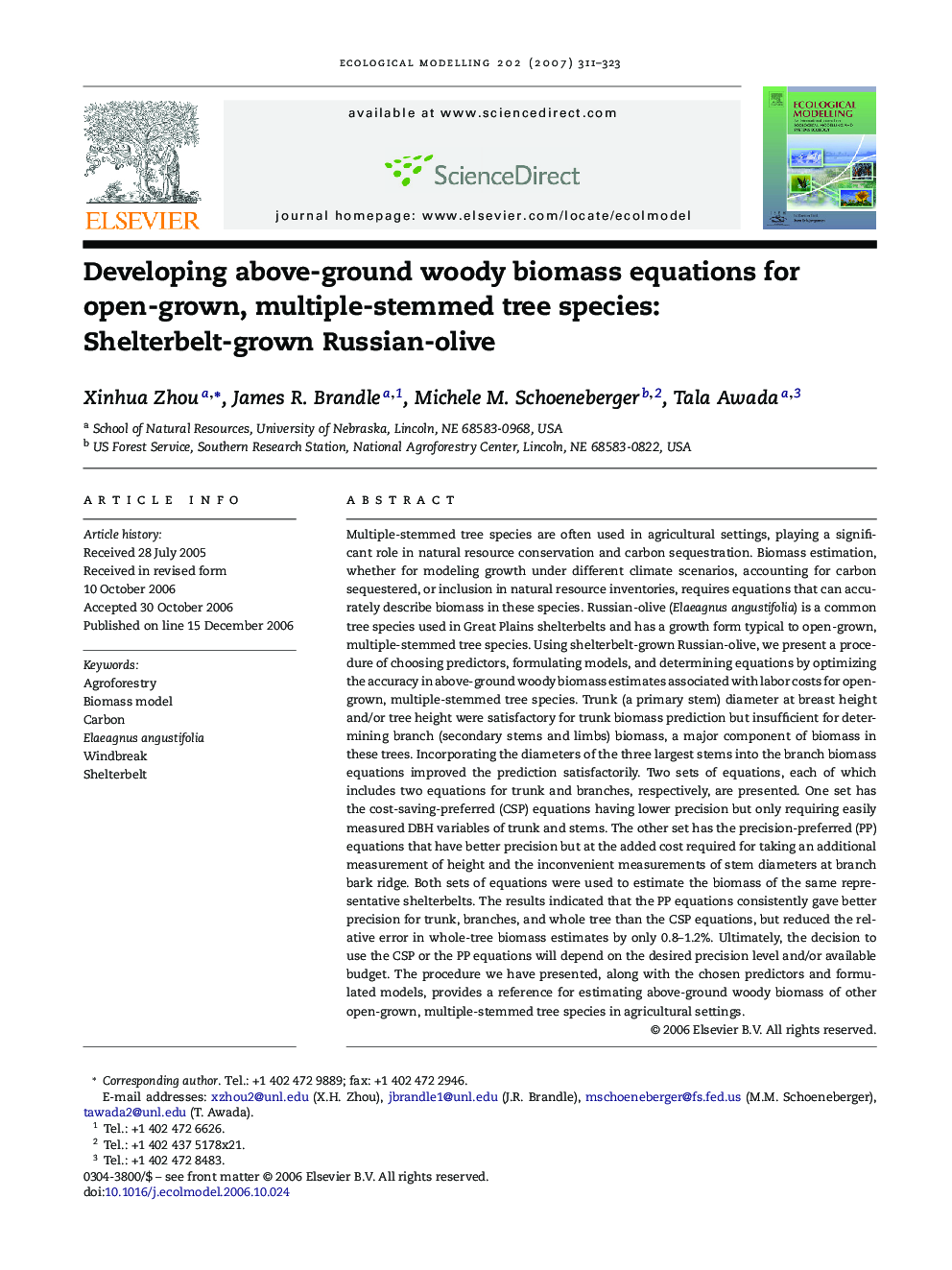| کد مقاله | کد نشریه | سال انتشار | مقاله انگلیسی | نسخه تمام متن |
|---|---|---|---|---|
| 4378663 | 1617552 | 2007 | 13 صفحه PDF | دانلود رایگان |

Multiple-stemmed tree species are often used in agricultural settings, playing a significant role in natural resource conservation and carbon sequestration. Biomass estimation, whether for modeling growth under different climate scenarios, accounting for carbon sequestered, or inclusion in natural resource inventories, requires equations that can accurately describe biomass in these species. Russian-olive (Elaeagnus angustifolia) is a common tree species used in Great Plains shelterbelts and has a growth form typical to open-grown, multiple-stemmed tree species. Using shelterbelt-grown Russian-olive, we present a procedure of choosing predictors, formulating models, and determining equations by optimizing the accuracy in above-ground woody biomass estimates associated with labor costs for open-grown, multiple-stemmed tree species. Trunk (a primary stem) diameter at breast height and/or tree height were satisfactory for trunk biomass prediction but insufficient for determining branch (secondary stems and limbs) biomass, a major component of biomass in these trees. Incorporating the diameters of the three largest stems into the branch biomass equations improved the prediction satisfactorily. Two sets of equations, each of which includes two equations for trunk and branches, respectively, are presented. One set has the cost-saving-preferred (CSP) equations having lower precision but only requiring easily measured DBH variables of trunk and stems. The other set has the precision-preferred (PP) equations that have better precision but at the added cost required for taking an additional measurement of height and the inconvenient measurements of stem diameters at branch bark ridge. Both sets of equations were used to estimate the biomass of the same representative shelterbelts. The results indicated that the PP equations consistently gave better precision for trunk, branches, and whole tree than the CSP equations, but reduced the relative error in whole-tree biomass estimates by only 0.8–1.2%. Ultimately, the decision to use the CSP or the PP equations will depend on the desired precision level and/or available budget. The procedure we have presented, along with the chosen predictors and formulated models, provides a reference for estimating above-ground woody biomass of other open-grown, multiple-stemmed tree species in agricultural settings.
Journal: Ecological Modelling - Volume 202, Issues 3–4, 10 April 2007, Pages 311–323